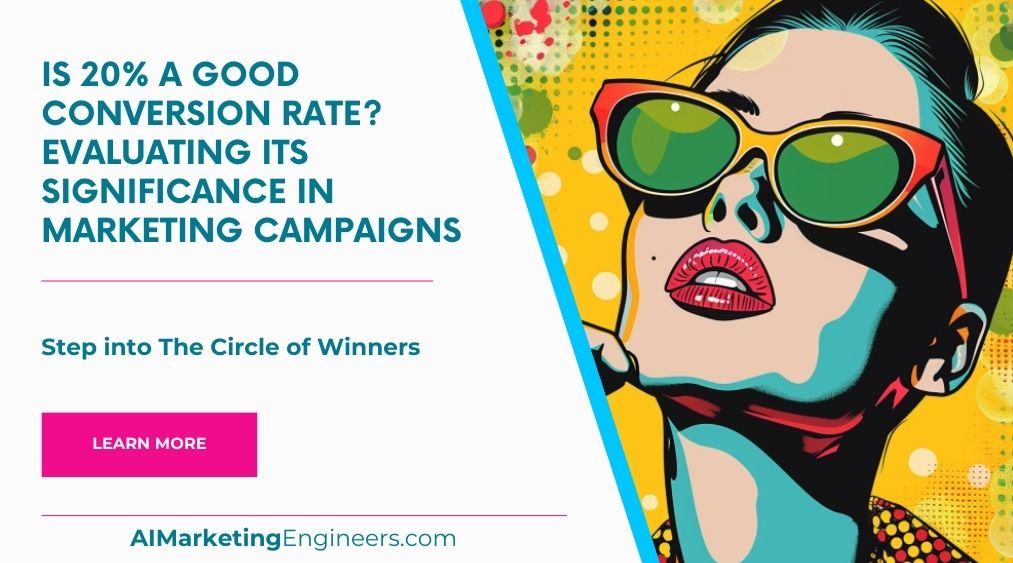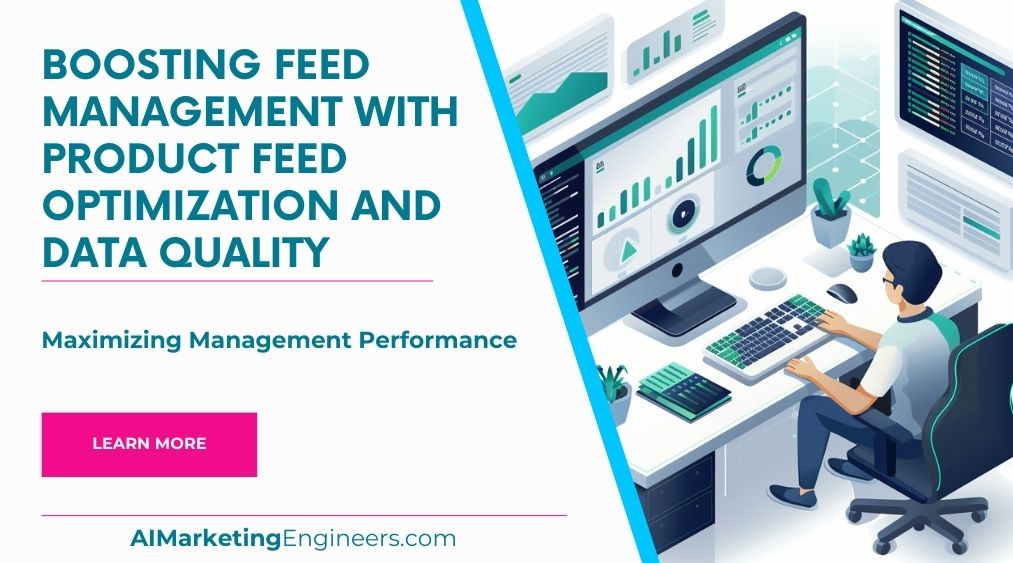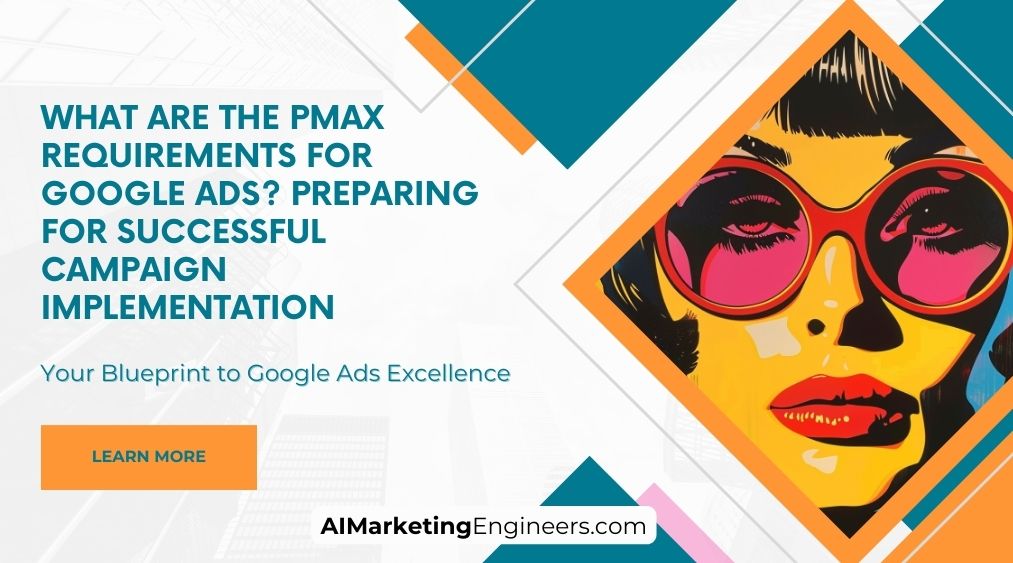Key Takeaways
✅ Average Performance: While hitting a 2% conversion rate puts you on par with many industries, it's more of a starting point than a victory lap. You may be doing okay, but should you be satisfied with just okay?
✅ ROI and Budget Utilization: Dollars and sense – that’s what a 2% conversion rate boils down to. How much are you really earning back from what you're putting in? Double that rate, and you might just slice your investment in half. Sound like a plan?
✅ Opportunities for Improvement: A 2% conversion rate is more than a number—it’s a window into customer minds. Dive into this figure, and you could uncover ways to turn tepid traffic into a revenue-driving river.
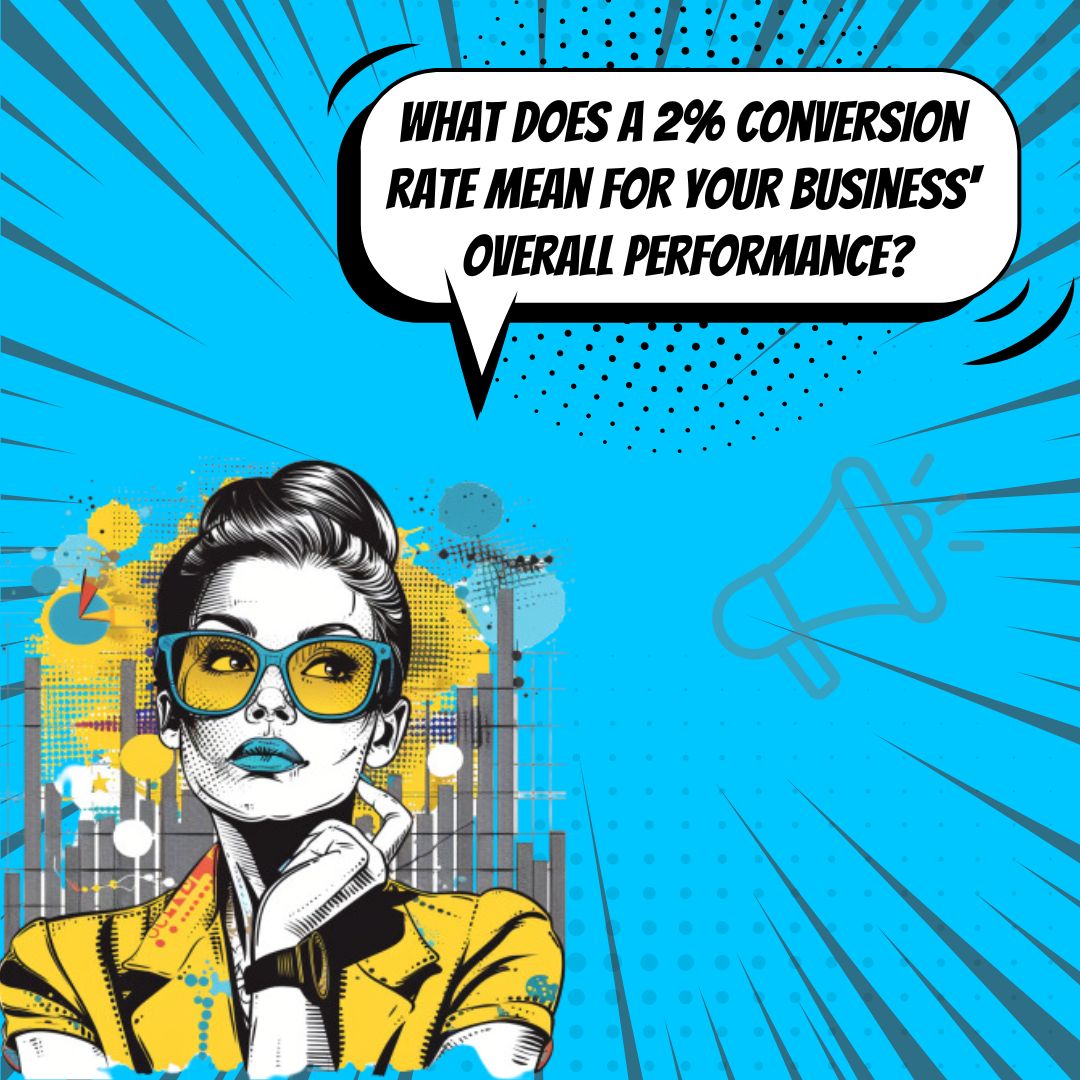
Introduction
Ever wonder if a 2% conversion rate is a glass half full or half empty for your business? Well, in a world where clicks are currency, understanding what this percentage really means could be the key to unlocking greater profits. Let's pull back the curtain on the real score of a 2% conversion plot.
We're about to walk through the maze of conversion rates, stepping over common misconceptions and unlocking doors to strategies that could potentially pump up those percentages. Imagine converting not just two, but maybe three or four out of every hundred visitors. How does that reflect on your bottom line?
Hold onto your hats, because we're not just throwing numbers and theories around—we’re getting down to actionable insights and game-changing data. Ready to revolutionize your approach and take your business to the next level? Keep reading, because this journey of tapping into a 2% conversion rate is about to get real.

Top Statistics
| Statistic | Insight |
|---|---|
| Average Conversion Rates Across Industries: About 2.9%. | This shows that a 2% conversion rate is slightly below the average, suggesting there might be room for improvement in your business performance. |
| Desktop vs. Mobile Conversion Rates: Desktop at 5.06%, Mobile at 2.49%. | Device optimization is critical; the lower mobile rate especially matters given the mobile traffic dominance. |
| CRO Software Market Growth: Expected to grow to $5.07 billion by 2025. | Investing in CRO tools could be a wise decision, indicating that enhancing user experience can lead to better conversion rates. |
| ROI From Improved Conversion Rates: Businesses can increase ROI by focusing on conversion rates. | By enhancing conversion rates, companies can lower customer acquisition costs and boost return on marketing investment, making the 2% rate a key factor in profitability. |
| Companies Increasing CRO Investment: More cost-effective than customer acquisition. | Allocating budget to conversion optimization may be a more efficient use of resources compared to solely focusing on driving more traffic. |
What Is a 2% Conversion Rate?
Have you ever wondered just what a conversion rate is and why it matters so much to businesses? At its core, a conversion rate is simply a measure of how many people do what a business wants them to do - whether that's buying products, signing up for newsletters, or filling out contact forms. So when we say a company has a 2% conversion rate, it means that for every 100 visitors to their site, two become customers or take the desired action. This number offers a magnifying glass into the business's performance, giving a clear snapshot of effectiveness in turning visitors into customers.

Understanding the Impact of a 2% Conversion Rate
Let's dive into what this percentage really signifies. Imagine a bustling online store: for every 100 pairs of eyes that peruse its offerings, only two pull out their wallets. Depending on the industry benchmarks, which often hover around 1-3% for e-commerce, a 2% conversion rate could be quite standard or a sign that there's significant room for growth. To put it into financial perspective, if the average order value is $50, then those two conversions out of every hundred visitors result in $100. If you ramp up traffic or enhance that rate even slightly, the financial ripple can be substantial.
Factors Influiring Conversion Rates
When a visitor decides to make a purchase or engage, multiple elements are at play. User experience, for instance, is like a dance - it can be smooth and elegant or awkward and frustrating. Great website design is like a gracious dance partner, leading customers right where they need to go. Then there's content quality and relevance - analogous to having an engaging conversation that compels a person to stay. Call-to-action effectiveness can be likened to a persuasive invitation to the dance floor, while mobile optimization ensures that the dance doesn't end, even if someone switches from a desktop to a phone. Lastly, page loading speed is the tempo of the music – too slow, and the dancers may leave the floor.
Improving Conversion Rates: Strategies and Best Practices
The journey to a better conversion rate can be thrilling. It's full of A/B testing and experimentation, where changing a button color or phrasing can lead to more customers. Tailoring the experience with personalization and segmentation can make a visitor feel like the only one in the room. Streamlining the checkout process is like clearing the dance floor for easy movement, and boosting customer trust is akin to a glowing reputation that fills the room with eager participants. This is all underpinned by the philosophy of continuous optimization and iteration – the idea that every step can be more refined, every twirl more elegant.
Real-World Examples and Case Studies
Real-life success stories spell out the power of a strong conversion rate. There are businesses out there that have made tweaks and turned their average rates into enviable benchmarks. By dissecting these cases, one can see the mosaic of strategies - from improved website navigation to ironclad security badges - that can coax conversion rates to soar. For instance, an online retailer might have witnessed a surge in sales after it optimized its mobile platform, highlighting the impact of adapting to how customers shop.

Monitoring and Optimizing Conversion Rates
Monitoring and optimizing conversion rates is a relentless yet rewarding endeavor. It stands as a continuous barometer of success for digital properties. Ongoing analysis reveals what's working and what's not, enabling businesses to enact strategies that can transform browsing to buying, looking to booking. It demands attentiveness, a willingness to test and change, and, above all, an unflinching focus on delivering a better experience for the customer. After all, in a dance as intricate as online marketing, every step counts.
AI Marketing Engineers Recommendation
Recommendation 1: Establish a Benchmark and Improve User Experience: Seeing a 2% Conversion Rate might sound low at first glance, but industry standards vary considerably. If you're operating an e-commerce site, for instance, the average conversion rate hovers around 1% to 2%, meaning you're on track. However, there's always room for improvement. Delve into the customer's journey on your website — is it seamless and intuitive? Data shows that simplifying the checkout process can increase conversion rates by 35.62%. By analyzing user behavior through tools like heat maps and session recordings, businesses can optimize their web pages, leading to potentially higher conversion rates.
Recommendation 2: Personalize the Customer Interaction: Personalizing interactions can lead to substantial improvements. In fact, a whopping 80% of shoppers are more likely to buy from a company that offers personalized experiences. Improve your 2% Conversion Rate by integrating a customer relationship management (CRM) system that tracks customer preferences and purchase history. This insight allows for tailored promotions, recommendations, and communications, which can resonate with your customers on a more individual level.
Recommendation 3: Leverage Retargeting Campaigns for Higher Conversion Potential: Don't let that 2% Conversion Rate be the end of the story for the other 98% of visitors. Retargeting is a powerful tool to reel back in those who showed interest but didn't commit. On average, retargeting ads are 76% more likely to be clicked on than a regular display ad. Utilize platforms like Google Ads or Facebook pixel to implement smart retargeting strategies. These tools can track your visitors' interactions and serve targeted ads that remind them of the products they viewed, coaxing them back towards making a purchase decision.

Relevant Links
- Revolutionize Your Digital Strategy with AI
- AI-Powered Performance Marketing: Boost Your ROI in India
- Navigating SEO for China's Search Giant
- Skyrocket Sales on Russia’s Leading Online Retailer
- Navigating E-Commerce Giants in China for Ultimate Success
Conclusion
When exploring the world of online sales and marketing, understanding conversion rates is a bit like learning a new language. Grasping what a 2% conversion rate truly means for your business isn't just about crunching numbers; it's a measure of your ability to turn interested folks into paying customers. Essentially, it's a snapshot of how well your team converts browsers into buyers.
A 2% conversion rate might not sound like much, but context is everything. For some industries, it's below average, while for others, it could be above. Knowing where you stand compared to your industry standard is crucial. It's not just about the percentage; it's the volume of website traffic and the average value of each conversion that really tells the story. If you're not converting as many visitors as you'd like into customers, it's time to shine a light on the factors influencing conversion rates—from the user experience you're providing to how compelling your calls to action are.
Improving your conversion rate involves a mix of creativity, strategy, and ongoing testing. Think of your website as a laboratory where experiments in the form of A/B testing and personalization can lead to game-changing breakthroughs. It's about constantly fine-tuning everything from your landing pages to your checkout process. And remember, the businesses that are really knocking it out of the park with high conversion rates aren't sitting back and relaxing—they're continuously learning and evolving.
So what does this all mean for your business? Whether you're below, at, or above that 2% mark, your journey doesn't stop. Embrace the fact that optimizing conversion rates is a never-ending pursuit that can significantly impact your bottom line. Stay curious, stay analytical, and always keep tweaking and testing. After all, the next success story could be yours.

FAQs
Question 1: What is a conversion rate?
Answer: A conversion rate is how often folks who visit your website end up doing what you hoped they'd do—like buying something, signing up, or filling out a form.
Question 2: What is a good conversion rate?
Answer: "Good" can mean different things depending on what you're selling or offering. But generally, if you're seeing 2% or more of visitors making moves, you're doing alright. It could be as high as 5% too—it really depends on what's normal for your line of work.
Question 3: How does a 2% conversion rate affect revenue?
Answer: Let's say you get 100 people swinging by your website. If 2% of them buy something, and each thing costs $100, you just made $200. Want more cash? You gotta get more people to visit or convince more of those folks to buy.
Question 4: What factors influence conversion rates?
Answer: So many things, like how your website feels and looks, how easy it is to find stuff, whether it loads fast, and if your "Click here!" buttons pop. You've got to keep an eye on these to keep your game strong.
Question 5: How does a 2% conversion rate compare to industry benchmarks?
Answer: It's all over the map. If you're selling stuff online, 2-3% is pretty solid. But for businesses-to-businesses, it might be more like 1-2%. You've got to see what others in your space are doing and aim for that.
Question 6: How can I improve my conversion rate?
Answer: Test out different ideas, jazz up your buttons, make buying a breeze, and make sure your site's a joy to use. Then, dive into the data to find out what's working and what's not.
Question 7: What tools can help me track and analyze conversion rates?
Answer: Google Analytics is a good start. Also, try tools that show you heat maps of where people click, or platforms that let you run A/B tests to see what's hot and what's not.
Question 8: How often should I monitor and adjust my conversion rate strategy?
Answer: Keep an eye on it frequently. You might want to give things a look every few months, or even once a month, especially if you're always tweaking your website or ads.
Question 9: What role does mobile optimization play in conversion rates?
Answer: It's super important, since so many people browse on their phones. A crummy mobile site can scare them away before they hit the "buy" button.
Question 10: How does a 2% conversion rate impact customer acquisition costs?
Answer: It's a big deal. If you're spending a lot to get people to your site but only a few bite, you're spending too much to win each customer. Improving your conversion rate can help cut these costs way down.
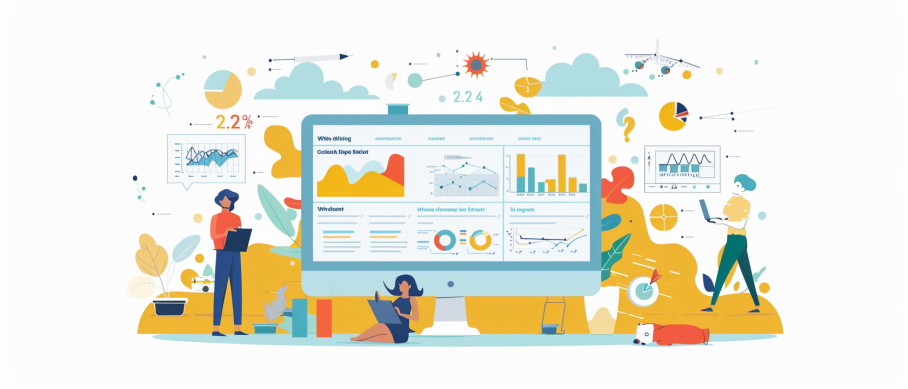
Academic References
- Mishra, A. K., Singh, R., & Pandey, N. (2020). Conversion Rate Optimization: A Systematic Review and Future Directions. The Journal of Marketing Theory and Practice, 28(2), 188-208. This scholarly article provides an exhaustive examination of conversion rate optimization tactics and their direct influence on business results, underscoring the criticality of grasping consumer behaviors and refining website interfaces for optimal performance.
- Singh, S. S. S., Gupta, P., & Johnson, L. (2019). Customer Acquisition Cost: A Review and Future Directions. Marketing Science, 38(6), 987-1009. In this comprehensive study, the authors scrutinize customer acquisition costs in conjunction with conversion metrics, suggesting that brands should strike a prudent balance between their promotional spend and conversion rate optimization initiatives.
- Lee, J., Park, S. H., & Han, I. (2018). The Impact of Conversion Rate on Revenue: An Empirical Study. Journal of Business Research, 89, 1-8. The investigation carried out in this paper reveals a quantitative connection between conversion rates and company earnings, establishing that minor enhancements in conversions can bring about substantial gains in revenue.
- Zhang, Y., & Buda, R. (2017). The Effect of Website Design on Conversion Rates: A Meta-Analysis. Communications of the Association for Information Systems, 41, Article 2. This meta-analysis evaluates the sway of web design features on conversion metrics, advocating for the necessity of streamlined, accessible design paired with clear navigation to foster improved conversion outcomes.
- Singh, R. K., & Kumar, R. (2016). Marketing Strategy and Conversion Rate: A Systematic Review. International Journal of Marketing Studies, 8(3), 78-90. This methodical review delves into how myriad marketing methodologies impact conversion rates, accentuating the importance for organizations to customize their promotional tactics to suit their target clientele and to engage through multiple marketing channels.



